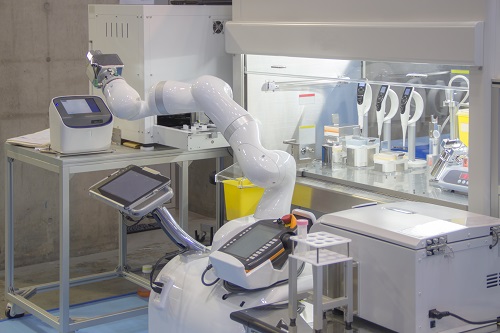

This work is licensed under a Creative Commons Attribution-NonCommercial 4.0 International License.
Authors who publish with this journal agree to the following terms:
- Authors retain copyright and grant the journal right of first publication with the work simultaneously licensed under a Creative Commons Attribution Non-Commercial License that allows others to share the work with an acknowledgement of the work's authorship and initial publication in this journal.
- Authors are able to enter into separate, additional contractual arrangements for the non-exclusive distribution of the journal's published version of the work (e.g., post it to an institutional repository or publish it in a book), with an acknowledgement of its initial publication in this journal.
- Authors are permitted and encouraged to post their work online (e.g., in institutional repositories or on their website) prior to and during the submission process, as it can lead to productive exchanges, as well as earlier and greater citation of published work (See The Effect of Open Access).
Abstract
Our intelligence is what makes us humans unique, and Artificial Intelligence is an extension of that quality that makes it humanoid. By 2029, an estimation of 95% of human interactions will be supported by Artificial Intelligence technologies. Humans have dynamic existence in the world, an
existence which excesses in knowledge, analysis, expression, ideas, and many more issues. With the rapid development of computer science and data technological dependence, it has been observed that Robots and Artificial Intelligence are making their way to fit into the human world as Humanoid Versions. Furthermore, they are even trying to support the present Health Care structure across the world and want to be present among the doctors, nurses, hospitals, and many other people, to solve and assist in the medical errands. Currently, the relationship between patients and health professionals is based on human interactions which form the natural foundation of health care. The field of healthcare is data-intensive, which leads it to perform complex tasks and compare and analyze huge volumes of data and try to classify them. This paper provides an immense dimension to Collaborative Intelligence, meaning the involvement of both human and artificial mankind in the health sector. So, when new inventions and discoveries are coming up, we know that Intellectual Property comes into the scene, as it protects and provides a vast number of monopolistic rights to the true owner or inventor. This paper makes a comprehensive analysis of human intelligence vs. artificial intelligence in the context of legality and acceptance from the lens of society. It also highlights
mapping Artificial Intelligence in the health care sector regarding an outlook of intellectual property.
In addition, this paper reflects an idea about technology transfer and a know-how move towards
AI-based medical machines and technologies from the Indian health care perspective. This paper concludes by mentioning the necessary improvements on AI or human assisting machines as well.

References
A. Atabekov, O. Yastrebov. «Legal Status of Artificial Intelligence Across Countries:.»European Research Studies Journal, Volume XXI, Issue 4, 2018: 773 - 782. https://www.ersj.eu/journal/1245/download
American Cancer Society.(2016). A high proportion of mammograms yield false results, leading to 1 in 2 healthy women being told they have cancer. http://www.wired.co.uk/article/cancer-risk-ai-mammogram
Anyoha, Rockwell. (2017). Can Machines Think?. Blog, special edition on artificial intelligence the history of artificial intelligence. https://sitn.hms.harvard.edu/flash/2017/history-artificial-intelligence/
Arsene, Codrin, The Global ‘Blockchain in Healthcare’ Report : The 2021 Ultimate Guide For Every Executive, January 10, 2020; https://healthcareweekly.com/blockchain-in-healthcare-guide
Bird, Eleanor Bird; Fox-Skelly Jasmin; Jenner Nicola; Larbey Ruth, Weitkamp Emma; Winfield Alan. (2020). The ethics of artificial intelligence: Issues and initiatives. EPRS | European Parliamentary Research Service Scientific Foresight Unit PE634.452. https://www.europarl.europa.eu/RegData/etudes/STUD/2020/634452/EPRS_STU(2020)634452_EN.pdf
Codrin Arsene, The Global ‘Blockchain in Healthcare’ Report: The 2021 Ultimate
Guide For Every Executive, January 10, 2020; https://healthcareweekly.com/
blockchain-in-healthcare-guide/
DW News. Saudi Arabia grants citizenship to robot Sophia. https://www.dw.com/en/saudi-arabia-grants-citizenship-to-robot-sophia/a-41150856
Future of life Institute. Asilomar ai principles. https://futureoflife.org/ai-principles/
Gabora, L., & Russon, A. (2011). The evolution of human intelligence. In R. Sternberg & S. Kaufman (Eds.), The Cambridge handbook of intelligence (pp. 328-350). doi:10.1017/CBO9780511977244.018, available at https://arxiv.org/ftp/arxiv/papers/1308/1308.5034.pdf
Huet Cécile; Directorate-General for Communication Networks, Content & Technology European Commission. European Commission's Initiatives in Artificial Intelligence.https://www.oecd.org/going-digital/ai-intelligent-machines-smartpolicies/conference-agenda/ai-intelligent-machines-smart-policies-huet.pdf
Info-communications Media Development Authority (IMDA); Personal DataProtection Comision. (2020). MODEL ARTIFICIAL INTELLIGENCE GOVERNANCE FRAMEWORK. https://www.pdpc.gov.sg/-/media/files/pdpc/pdffiles/resource-for organisation/ai/sgmodelaigovframework2.pdf
Kuzniatsou, Denis. Technology Transfer Methods. DENIS KUZNIATSOU’S PERSONAL BLOG (July20,2021). http://innodigest.com/technology-transfermethods/
Lakatos L, Janka Z. (2008). Evolution of human brain and intelligence. Ideggyogy Sz. (pp.220-9). Hungarian. PMID: 18763477. available at. https://pubmed.ncbi.nlm.nih.gov/18763477/
Magic, Peter.(2003).International Technology Transfer & Intellectual Property Right. http://citeseerx.ist.psu.edu/viewdoc/download;jsessionid=24D28C24A4201F02957CE402594BFF8D?doi=10.1.1.123.9989&rep=rep1&type=pdf
No Longer Science Fiction, AI and Robotics are transforming healthcare; https://www.pwc.com/gx/en/industries/healthcare/publications/ai-robotics-newhealth/transforming healthcare.html
Pagallo,Ugo; Cuijpers,Colette; Durante,Massimo; New Technologies and Law.
ScienceDaily. The evolution of human intelligence. https://www.sciencedaily.com/terms/hominid_intelligence.htm
«State of the Arts: How Should Canadian Copyright Law Treat Works.» THE CANADIAN BAR ASSOCIATION, s.f.w.cba.org/CBAMediaLibrary/cba_na/PDFs/Sections/IP-Copyright-of-AI-createdworks-AODA.pdf
TARDI, CARLA. Moore's Law. 24 de February de 2021. https://www.investopedia.com/terms/m/mooreslaw.asp.
World Health Organization. Who Guidelines on the Transfer of Technology in Pharmaceutical Manufacturing. April 2021, https://cdn.who.int/media/docs/defaultsource/medicines/norms-and standards/currentprojects/qas20_869_transfer_of_technology.pdf?sfvrsn=552e10bd_13



















